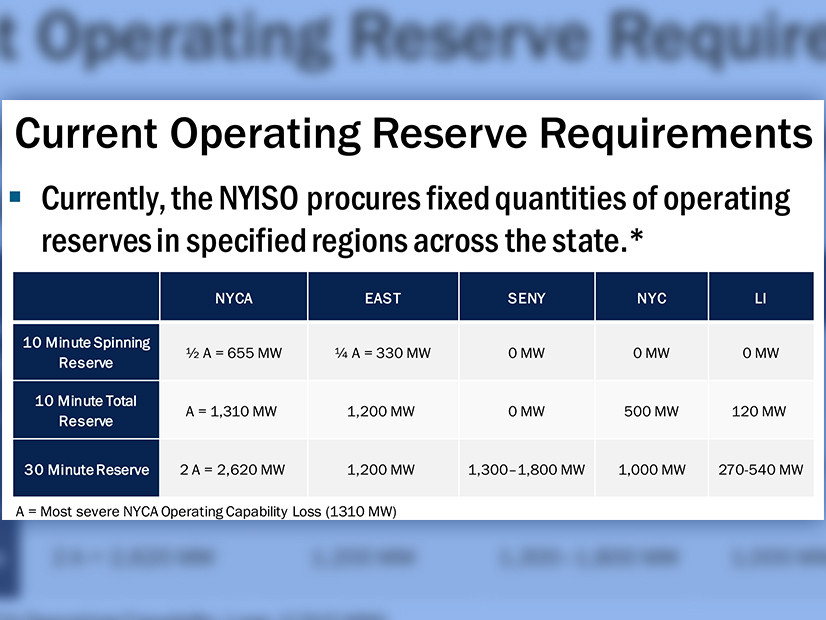NYISO is evaluating the feasibility of dynamically scheduling reserves, a project that involves determining the minimum operating reserve requirements based on the single largest source contingency during market runs and exploring the dynamic allocation of reserves based on available transmission capability.
The ISO is currently stress-testing the prototype mathematical formulation in the day-ahead security-constrained unit commitment, real-time commitment and real-time dispatch intervals, Pallavi Jain, NYISO energy market design specialist, in presenting an update on the Reserve Enhancements for Constrained Areas project to stakeholders.
“Essentially, we’re adding additional constraints to the optimization to see if we can schedule reserves dynamically,” Jain said. “Right now, because we’re doing day-ahead — and in day-ahead you barely ever see any shortages — we’re looking at the clearing prices to see if it’s being determined correctly, if the right resources are being backed down how we would expect it.”
NYISO is testing the prototype under different scenarios and analyzing the accuracy of the results to test the effectiveness of incorporating it into the market software. The ISO has always operated under static reserve requirements, so moving to a dynamic procurement methodology required studying, Jain said.
The study is also looking at the dynamic allocation of reserves based on available transmission capability; in other words, shifting reserve procurements to lower-cost regions when sufficient transmission capability exists.
“Therefore, a more dynamic reserve procurement methodology could address these two considerations and also improve market efficiency by better aligning market outcomes with how the power system is operated,” Jain said.
The transmission part of the study includes creating locational operating reserve requirements for certain load pockets within New York City and perhaps modeling those requirements based on available transmission capability. The study also will evaluate modeling of certain city load pockets when operating reserves provide congestion relief.
“NYISO believes an efficient, more granular operating reserves concept is dependent on developing the transmission as reserves capabilities,” Jain said.
The ISO expects to implement dynamic reserves in 2025.
“This is a very big change in how we currently model reserves,” Jain said.
